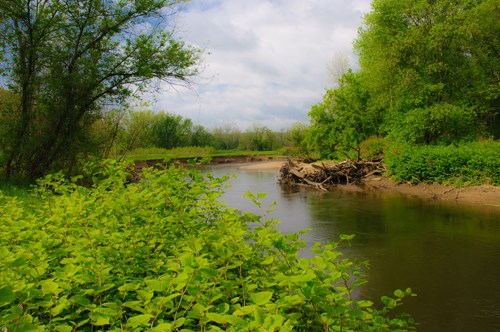
©TED TOTH Cuyahoga Valley National Park's proximity to large urban areas, long history of use, and high visitation make it vulnerable to a variety of environmental concerns. Water quality in the park's rivers and streams varies from good to poor. The Cuyahoga River, although much improved from its days as the "river that burned," still has some pollution problems. Lands now within the park had many different uses in the past, including conventional agriculture; mining of topsoil, sand, and gravel; quarries; dumps; industry; and residential development. The park has often initiated actions to restore degraded areas to a more natural state when natural succession processes are insufficient. Many of these areas are now in various stages of succession, giving visitors the opportunity to see butterflies, birds, and other animals taking advantage of plentiful food and shelter. The park is working to inventory, monitor, and control invasive plants. Spongy moths, an exotic insect species from Europe, defoliated over 4,000 acres of forest in 1999. The park has since implemented a suppression program to help minimize and mitigate further moth defoliation effects. Park staff, volunteers, university researchers, local organizations, and other agencies help monitor these and other environmental concerns to identify problems, establish trends, and assist in management decisions. Click the links below to learn about the parks environment! |
Last updated: June 21, 2023
